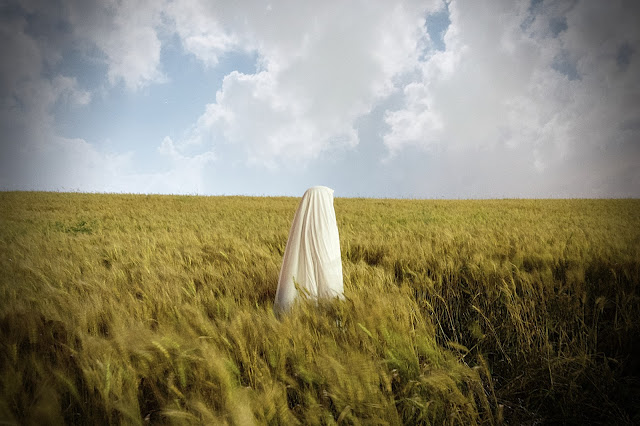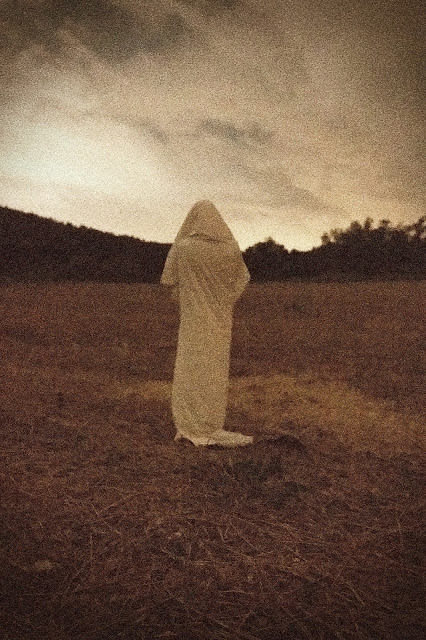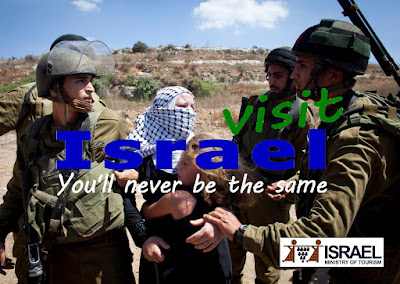Visit ‘Cry the Beloved Country’ – Palestinian Exhibition from Gil Mualem-Doron
This event for Refugee Week 2020 will be showing at P21 Gallery in September 2020.

‘Cry the Beloved Country’ is an exhibition by Dr Gil Mualem-Doron, an Arab/Israeli artist that was scheduled for 2nd April. Unfortunately it was caught by the COVID-19 lockdown. It is now being shown online until it is ready, probably on 27 September to be displayed physically.
‘Cry the Beloved Country’ will include a presentation of photography and film projects on the subject of Palestinian refugees and a conversation with the Palestinian historian Dr Salman Abu Sitta, the artist Dr Gil Mualem-Doron, Eitan Bronstein Aparicio the founder of the NGO Zochrot and De-Colonizer and the curator Ghazaleh Zogheib.
The event will include the presentation of the photography project “Present Absentees” about Palestinian internal refugees in Israel which won the third prize in the Long Exposure category in Local Testimony / World Press Photo 2020 and screening of the film To Gaza and Back Home – by Eitan Bronstein Aparicio and De-Colonizer.

The film documents the story of the destroyed Palestinian village of al-Ma’in, the Israeli settlement that was built on top of it, the story of the village’s refugees and the reaction of the Israeli settlers when they faced the place’s history when it was presented to them in an exhibition in one of the buildings that survived the destruction.

This Event is supported by Art Council England and Hub Collective.
‘Cry the Beloved Country’was also a famous novel written in 1948 by the South Africa liberal Alan Paton. I read it at school and it opened my eyes to Apartheid.
If you want to see the exhibition online please register here: or https://tinyurl.com/ybdpx3ko
“Cry, the beloved country” is a nightmarish series of room installations and photography works dealing with the links between Great Britain, Israel and Palestine and depicting the catastrophic results of this unholy conundrum. Built as a journey into “the heart of darkness” the exhibition is intended to negate many Israelis and Zionists supporters’ view of Israel as a “villa in the jungle”.
Dr. Gil Mualem-Doron (1970) is a Arab-Jewish artist, born and based in the UK. Mualem-Doron’s work is research-based, often transgresses social norms with a focus on issues such as identity politics, nationalism, placemaking and histories of place, social justice, and transcultural aesthetics. The exhibition’s text is written by the curator Galit Eilat director of Meduza Foundation (Netherlands) and Eilat co-curated the [12] 31st São Paulo Biennial.

The exhibition title “Cry, the beloved country” is taken from an article published in the most read Israeli newspaper, Maariv, in 1953, by its chief editor Dr Ezriel Karlebach. In the article Karlebach compares some of the new state laws against the Arabs who became Israeli citizens to Nazi laws in the mid 1930s.
The article’s title was taken from the well-known book by the same name, written in 1948 by the South African writer Alan Paton, and in which he depicts the rise of the apartheid regime. This article, alongside research into expressions and deeds by Israeli politicians, rabbis and settlers, inform the centrepiece of the exhibition – the reconstruction of an installation – a performance piece that took place on the eve of the centenary of the Balfour Declaration in Trafalgar Sq.
In the performance, an actor dressed in a Klu Klux Klan cloak, partly made from Mualem-Doron’s Jewish prayer shawl, is standing and saluting Nelson’s statue whilst holding the Israeli Flag. The installation in the gallery includes photographs from this intervention as well as two others that took place in Tel Aviv and led to a near arrest of the artist.

The ground floor is occupied by a film installation juxtaposing a “postcard image” of Tel Aviv beach on the sunny day of the April 2019 election with chilling soundtracks of testimonies of Palestinians who have suffered attacks on beaches in Israel and Gaza. For the visitors to hear the soundtracks they have to use their bodies to physically obscure the projected image.
On the way to the gallery’s dark basement, the visitors encounter forty portraits of Israeli Palestinians (Palestinian who stayed during the 1948 war in what now is Israel and who are therefore Israeli citizens). The participants’ portraits were taken with a historical image of the village in which they or their parents were born and grew up in is projected on them and the wall behind. The land and houses of these people were confiscated after 1948 and their village was destroyed, along with 400 or so other villages in historical Palestine.
The lands where the village stood is now part of the Zionist National Trust Forest and in part of a Kibbutz. Considered by the state of Israel as “Present Absentees”, they are among the hundreds of thousands of Israeli- Palestinians who are de facto internal refugees. This body of work recently won a 3rd place award at the photography exhibition Local Testimony which is part of the Magnum World Press photography exhibition, 2019.
The basement contains three other works that depict the relations between the British colonisation of Palestine and the present situation. The large installation is made out of 400+ Victorian roof tiles printed with Palestinian embroidery patterns, commemorating the destroyed Palestinian villages during and after the 1948 war. Broken tiles also form parts of miniature sculptures that link the current gentrification process in Jaffa to the Judaification of the old city. They also feature in a film depicting the destruction of the last remains of a Palestinian village on a beach in Tel Aviv.
In the past five years Dr. Gil Mualem-Doron has won several grants from the Art Council England additional to other public and private bodies, was commissioned to create new works by Counterpoints Arts, Brighton Pride, the Mayor of London and Ben & Jerry’s. His work has been exhibited at places such as Tate Modern, Turner Contemporary, the South Bank Centre, the Jewish Museum (London), and the People’s History Museum, Manchester, Haifa Museum of Art (Israel) and at Vrystaat Kunstefees Arts Festival, South Africa. Recently he gained artist residencies and solo exhibitions at Umm El-Phemem Gallery, Israel and Greatmore Art Centre in Cape Town, South Africa. More about Mualem-Doron can be found on http://www.gildoron.co.uk
The exhibition will be accompanied with a series of film screening and discussion on the issue of the Palestinian Nakba and the right of return, the parallels between South Africa’s Apartheid and Israel and a round table on the differences and similarities between political, activist, collaborative and transgressive art practices. p.s.
“The Holocaust should bring us to ponder our public lives and, furthermore, it must lead anyone who is capable of taking public responsibility to do so,”
Golan said.
“Because if there is one thing that is scary in remembering the Holocaust, it is noticing horrific processes which developed in Europe – particularly in Germany – 70, 80, and 90 years ago, and finding remnants of that here among us in the year 2016…It’s scary to see horrifying developments that took place in Europe begin to unfold here…”
IDF deputy chief, Yair Golan in a Holocaust MemorialDay speech, Israel, 5th May 2016
“We now have a law that confirms the Arab population as second-class citizens. It, therefore, is a very clear form of apartheid. I don’t think the Jewish people survived for 20 centuries, mostly through persecution and enduring endless cruelties, in order to now become the oppressors, inflicting cruelty on others. This new law does exactly that. That is why I am ashamed of being an Israeli today.”
Daniel Barenboim on the Basic Law: Israel as the Nation-State of the Jewish People, Today, I Am Ashamed to Be an Israeli (July 22, 2018), Haaretz.
A link to high-resolution images, a photoshoot at the gallery and an interview with Mualem-Doron can be arranged by contacting the artist on 07954439301 or [email protected] or the P21 Gallery 020 7121 6190 or [email protected]
Further information about selected works:
“The sea is the same sea, and the Arabs…” a film installation (London’s Square, Tel-Aviv, Israel 2019).
The film and images from the installation can be viewed here:

The film installation juxtaposes a “postcard image” of Tel Aviv’s beach during the sunny day of April 2019 election with a chilling soundtrack made of a series of testimonies of Palestinians who were victims of racially motivated attack which took place at several beaches in Israel in the past few years. None of the perpetrators of these were found or jailed.
In addition, the installation includes an audio interview with two Palestinian women from the Occupied Territories who saw the sea for the first time after they were smuggled there for a getaway day with their children. The last recording is taken from a well-known media record of Huda Ghalia, age 11, who lost all of her family in an attack on Gaza beach, in 2006 by the Israeli marines.
Visitors who would like to hear the alternative soundtrack to the film via headphones have to block with their bodies part of the projected image, casting a shadow on the screen that opens the space to these often muted and forgotten voices.
The title of the installation “The sea is the same sea, and the Arabs…” is part of a well known quote by Yitzhak Shamir, the extreme right-wing terrorist and former Israeli prime minister. The full quote,
“The sea is the same sea and the Arabs are the same Arabs”
implied that “the Arabs had not changed their animosity towards Israel and their desire to throw the Jews into the sea” – a view cherished and propagated by the current prime minister Benjamin Netanyahu.
Cry, the beloved country (2015) A mixed-media installation and street intervention (Tel Aviv & London 2017).


The work comprises of a mannequin wearing a Ku Klux Klan costume, partly made from a Jewish prayer shawl that was used originally by the artist in his Bar Mitzva ceremony. The figure is positioned to gaze at a series of quotes written on the gallery’s wall as if trying to decipher their origins: Adolf Hitler? Al Qaeda? The KKK? Donald Trump? Or Israeli rabbis and politicians.
The answer is by all but it is very hard to guess the origins as the phrasing and the themes of these quotes are very similar. The visitors will be able to obtain online the quotes with the reference of their authors/utterers.
The room installation was firstly conceived for an art gallery in Tel Aviv in the wake of the Duma village arson attack which resulted in the loss of life of three of the same family members; 18-month-old Ali Dawabsheh was burned alive in the fire, while both his parents died from their injuries within weeks. After the submission of the work to the gallery an email from the gallery manager stated that
a. the work is not art
b. it is too risky for the gallery to show and
c. that it is a family-friendly gallery and this will deter families from participating in other activities.
As a result a street intervention was staged outside Tel Aviv Museum of Art, in response to death threats the artist received from one of the Museum’s trustees after creating work in responding to “Operation Protective Edge” / Gaza war 2014. Another intervention took place outside the “Independence Hall” in Tel Aviv and in
London’s Trafalgar Square on the day of the 100th anniversary of the Balfour Declaration.
The full texts used for the work and images from the street interventions in London and Tel Aviv can be found on the work’s webpage mentioned above .
As a result a street intervention was staged outside Tel Aviv Museum of Art, in response to death threats the artist received from one of the Museum’s trustees after creating work in responding to “Operation Protective Edge” / Gaza war 2014. Another intervention took place outside the “Independence Hall” in Tel Aviv and in
London’s Trafalgar Square on the day of the 100th anniversary of the Balfour Declaration.
The full texts used for the work and images from the street interventions in London and Tel Aviv can be found on the work’s webpage mentioned above .

3. “Present Absentees” socially engaged photography project (Israel, Umm El Faheem Gallery and the Elderly House, 2019). [shepherd]
The project depicts the issue of “Present Absentees” or Internally Displaced Persons (IDP’s) in Israel. Present Absentees are Palestinians who fled or were expelled from their home in Mandatory Palestine by Jewish or Israeli forces, before and during the 1948 Arab-Israeli war, but who remained within the area that became the state of Israel. They are regarded as absent by the Israeli government because they were absent from their homes on a particular day, even if they did not intend to leave them for more than a few days, and even if they left involuntarily. IDPs homes, property and lands were seized by Israel. 274,000 Arab citizens of Israel (1 out of 4) are
IDP. The project was created during an Artist’s Residency at Umm El Fahem Gallery, Israel and the photographs were taken in the gallery as well as in The Elderly House in the town. Local residents were invited for a photoshoot in which they were photographed on the background of historical photos of Al-Lajoun – a nearby village where they or their ancestors were born. The houses and the land of the village were confiscated by the state after 1948 and the village was destroyed shortly after.
The land and some of the survived buildings belongs today to the Jewish National Fund (KKL in Hebrew) and used as a park. In 2017, KKL-JNF friend and supporter Jose Luis Mendoza, president and founder of the Catholic University of San Antonio of Murcia, Spain donated further funds to cover the area of the village with further forest trees. Other parts of the village land were given to Kibbutz Megido in which until today one of the village mosques is located. In the last decade, the original residents of El Lajun were trying to negotiate as well as start legal cases, aiming to gain back some of the lands that were taken. Others created plans that envisaged the re-building of the village. More info about the village can be found here:
The participants in the photoshoot were asked to choose which of the historical photos, taken from Umm El Fahem Gallery archive, they would like to be photographed with. The photos were projected on a wall and the participants were positioned in front of the projected image. They could not see the projected image that was behind them and blinded by the light emitted from the projector, they could not see the action, the photographic act nor the photographer.
One of them described his experience as being in a visual vacuum – blinded and left only with his thoughts or memories of the village. Only after the photo was taken the participants could see on the camera’s digital screen how they were positioned in the village landscape and chose the photo that they were happy with. The project was chosen to be exhibited in Edut Mekomit / Local Testimony 2019 in the Eretz Israel Museum.

4. No Man’s Land (Hama’s Series) 2019
I met Hamad (pseudonym) during an Artist’s Residency at Umm El Fahem Gallery, Israel. He is the third generation of a family that originated in Al-Lajoun village that was under heavy attack in 1948 War and then was destroyed by the state of Israel. The village’s lands were confiscated by the state and were given to the Jewish National Fund (KKL in Hebrew) and now are used as a park.
Other parts of the village land were given to Kibbutz Megido in which until today one of the village mosques is located. A few ruined buildings and the village’s graveyard are still there.
Hamad from time to time visits the site where his granddad’s house used to be. The photos, taken in the dead of the night, depicts him meandering in the fields that now belong to the kibbutz, next to some ruins and in the graveyard. Not wanting to be recognized I suggested he will wear a cloth, resembling Jalabia – traditional regional wear. There are almost 300,000 ghosts like Hamad haunting the Holy Land.


5. “Visit Israel – You Will Never Be the Same” Series of photo collages with Active Stills collective (2016)


A series of photographs by the celebrated Israel-Palestinian photography collective ActiveStills and the photojournalist Michaela Whitton that is used as a mock tourism campaign by the Israeli Tourism Ministry, using the ministry’s latest campaign slogan and modified logo.

